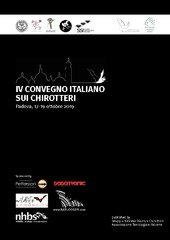Приказ основних података о документу
Effects of free-ranging cattle and landscape on bats in high mountain environment
| dc.creator | Ancillotto, Leonardo | |
| dc.creator | Festa, Francesca | |
| dc.creator | De Benedetta, Francesca | |
| dc.creator | Consentino, Francesca | |
| dc.creator | Bajić, Branka | |
| dc.creator | Russo, Danilo | |
| dc.date.accessioned | 2021-07-23T10:37:44Z | |
| dc.date.available | 2021-07-23T10:37:44Z | |
| dc.date.issued | 2019 | |
| dc.identifier.uri | https://www.mammiferi.org/wp-content/uploads/2019/03/gircmammiferi-org/2019/03/GIRC2019_web_compressed-2.pdf | |
| dc.identifier.uri | https://radar.ibiss.bg.ac.rs/handle/123456789/4266 | |
| dc.description.abstract | Intensive agricultural system and livestock farms have replaced primary forest, which implies an impoverishment of biological communities. Where livestock is managed as free ranging at low or medium grazing intensities, however, this may prove beneficial to biodiversity because it favours the occurrence of spatial and trophic resources for wildlife. Foraging and commuting by insectivorous bats are affected by both insect availability and habitat / landscape structure, which in turn may be affected by the presence of cattle. Previous work showed a positive relationship between the presence of cattle and their dung and bat activity at low elevation. Therefore, we hypothesized that the same relationship would occur in mountainous landscape of Central Italy. We set our study at the Abruzzo, Lazio and Molise National Park. We surveyed bat activity using Pettersson D1000x bat detectors for 4 hours since sunset in June-August 2017. The 15 sampling sites where located between 900 and 1520 m a.s.l. and each site was sampled three times, each time with a different treatment according to cattle condition: cattle and dung present; dung, but not cattle, present; both cattle and dung absent. Landscape structure at each sampling sites was quantified as the amount of forest area and the distance to, and length of the nearest forest edge within “landscapes” of different size, i.e. circles characterized by a radius of 50, 100 and 300 m around each sampling site. The analysis was carried out with QGis (LecoS plugin). To analyse the response of bat activity and richness to the above described factors, we used generalized linear mixed models (GLMM) at the three spatial scales considered; a Tukey Post-Hoc test was carried out for factors that proved significant. Bats responded in a species-specific way to the three treatments as well as landscape structure. Total bat activity was, at all landscape scales considered, positively influenced by the amount of forest cover and proximity to forest edge. This result can be explained considering that bats exploited the forest both for foraging and for commuting. Hypsugo savii activity was affected by the amount of edge habitat, yet this had a significant effect only within 100 m from the sampling site. Pipistrellus kuhlii and P. pipistrellus increased activity where forest was more abundant, at the scales of 100 and 300 m, and that of P. kuhlii decreased at higher altitudes unless the other species present in the area. Out of all species considered, only P. pipistrellus preferred site where cattle were present. Cattle herds probably act as landmarks, attracting bats which may thus exploit the swarms of blood-sucking insects that often feed on cattle. Our study confirms the important relationship existing between free-ranging livestock and bat foraging behaviour, at least for opportunistic bat species that feed on small dipterans and forage in open space or along forest edges. | sr |
| dc.language.iso | en | sr |
| dc.publisher | Gruppo Italiano Ricerca Chirotteri – Associazione Teriologica Italiana | sr |
| dc.rights | openAccess | sr |
| dc.source | IV Convegno italiano sui chirotteri; 2019 Oct 17-19; Padova, Italy | sr |
| dc.title | Effects of free-ranging cattle and landscape on bats in high mountain environment | sr |
| dc.type | conferenceObject | sr |
| dc.rights.license | ARR | sr |
| dcterms.abstract | Феста, Францесца; Aнциллотто, Леонардо; Де Бенедетта, Францесца; Цонсентино, Францесца; Пејић, Бранка; Руссо, Данило; Еффецтс оф фрее-рангинг цаттле анд ландсцапе он батс ин хигх моунтаин енвиронмент; Еффецтс оф фрее-рангинг цаттле анд ландсцапе он батс ин хигх моунтаин енвиронмент; | |
| dc.rights.holder | ©2019 Associazione Teriologica Italiana onlus | sr |
| dc.description.other | IV convegno italiano sui chirotteri; 2019 Oct 17-19; Padova, Italy. Gruppo Italiano Ricerca Chirotteri – Associazione Teriologica Italiana; 2019. p. 37. | sr |
| dc.citation.spage | 37 | |
| dc.type.version | publishedVersion | sr |
| dc.identifier.fulltext | https://radar.ibiss.bg.ac.rs/bitstream/id/8549/bitstream_8549.pdf | |
| dc.citation.rank | M64 | |
| dc.identifier.rcub | https://hdl.handle.net/21.15107/rcub_ibiss_4266 |

